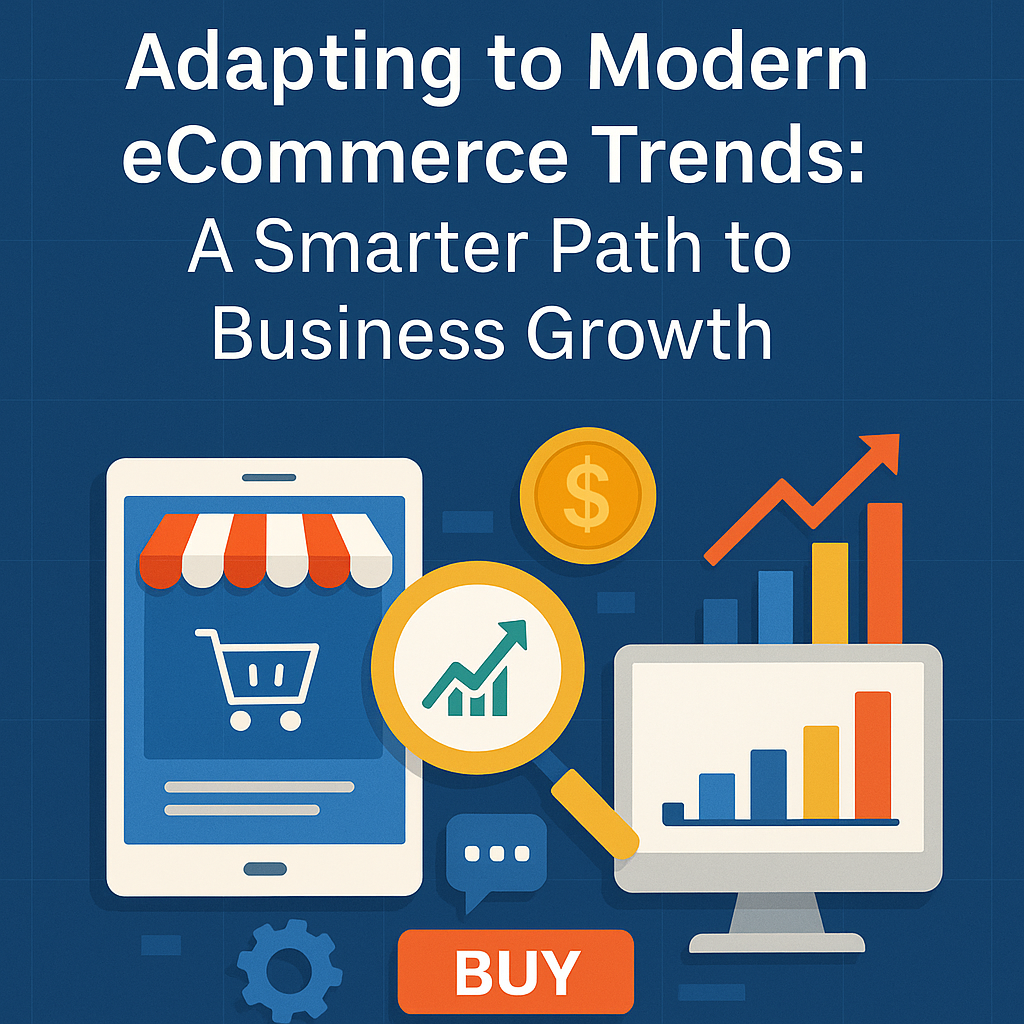Adapting to Modern eCommerce Trends: Smarter Path to Business Growth

Strong 8k brings an ultra-HD IPTV experience to your living room and your pocket.
The world of eCommerce has rapidly shifted in the past few years. From the rise of mobile-first experiences to customer demands for faster checkout and secure transactions, brands are finding it more important than ever to keep up with emerging patterns. Consumers now expect fast, reliable, and personalised interactions at every digital touchpoint.
In this article, we’ll walk through how businesses can adjust their strategies to meet current expectations. We'll also examine smart structural and technical approaches that are shaping modern eCommerce without diving into unnecessary buzzwords. The goal is to stay relevant, protect digital assets, and grow sales with proven methods.
Why User Expectations Are Shaping the eCommerce Blueprint
Online shoppers no longer just browse—they interact. They search for fast load times, smooth navigation, and consistent experiences across all platforms. This demand places significant pressure on eCommerce businesses to be more responsive, especially during high-traffic periods such as sales seasons or product launches.
The traditional eCommerce setup often fails to meet these growing expectations. As a result, more businesses are looking at new solutions to bridge the gap between flexibility and performance.
One such solution that’s gaining attention is headless commerce. Unlike traditional platforms, this model separates the front end from the back end, giving developers the freedom to design without the limitations of the core platform. This structure allows for more control over customer-facing experiences while maintaining stability in the background systems.
To understand this shift better, check this post on How Headless Commerce is Changing the eCommerce landscape for businesses.
Prioritising Speed and Efficiency in Operations
Page speed and checkout flow directly influence conversion rates. A delay of even a few seconds can cost an eCommerce store a large number of potential buyers. Tools like Google PageSpeed Insights help store owners identify problem areas like uncompressed images or unused scripts.
Furthermore, automation in order processing, stock updates, and customer communications helps businesses stay on top of demand without stretching resources. Instead of relying solely on manual input, businesses can make use of plugins and third-party tools to reduce human error and improve efficiency.
Data also plays a central role. Analysing user behaviour through heatmaps, click-through tracking, and sales funnels provides insights into what’s working and what needs to change. Businesses can use this data to simplify their checkout process, rearrange site navigation, or rework product descriptions based on user interest.
Safeguarding Your Business: Security Can’t Be Ignored
As eCommerce grows, so do the risks associated with cyber threats. From phishing attempts to data breaches, online stores are prime targets for malicious activity. Customers trust online platforms with their personal and payment information, which makes data protection a priority for business owners.
SSL certificates, secure payment gateways, regular software updates, and two-factor authentication are basic yet crucial steps. However, there's more to digital safety than the usual checkboxes.
For those looking to build a strong defence, this Cybersecurity Checklist For Ecommerce provides a step-by-step guide for business owners to review and reinforce their systems.
Staying ahead of threats also means training your staff, reviewing third-party integrations, and regularly auditing your site’s performance. Even a small misstep—like using outdated plugins can open the door for potential attacks.
Mobile Optimisation and Voice Search Trends
Mobile commerce is no longer optional. More than half of global online traffic comes from smartphones. That means your website needs to function just as smoothly on a 6-inch screen as it does on a desktop monitor. From the font size to touch-friendly buttons, mobile responsiveness impacts both rankings and user satisfaction.
In addition, voice search is on the rise. Consumers are speaking to smart assistants to shop, check order statuses, or find nearby stores. To accommodate this shift, websites should be optimised for natural language queries and concise answers. This change supports AEO (Answer Engine Optimisation), helping websites show up in voice search results and featured snippets.
The structure of your website content should reflect clear headings, question-based sections, and short, factual answers. Schema markup, FAQ sections, and rich snippets are all effective tools in improving visibility in voice results.
Sales Tactics That Drive Consistent Growth
While paid ads and influencer marketing still have value, long-term sales success often comes from internal optimisation. A few examples include:
- Upselling and cross-selling based on purchase history
- Email marketing automation for abandoned carts
- Loyalty programs that encourage repeat business
- Seasonal promotions timed with customer behaviour trends
An often overlooked yet powerful approach is improving product page content. Clear images, accurate sizing charts, genuine customer reviews, and comparison tables reduce buyer hesitation.
If you're looking for new ideas to boost your store's revenue, take a look at these Powerful Growth Hacks designed specifically for Magento stores—but the insights can apply to other platforms as well.
Sustainable Practices Are No Longer Optional
Environmental awareness is influencing online buying decisions. More shoppers now check for recycled packaging, ethical sourcing, and carbon-neutral shipping options. Adding this information to your website can build trust and even influence purchase decisions.
From a development perspective, optimising your site to reduce unnecessary server load and data transfers also contributes to sustainability. Compressing images, limiting scripts, and minimising server requests can help lower your store’s digital carbon footprint.
Looking Ahead: The Value of Adaptability
The eCommerce landscape is never static. Algorithms change, platforms update, and user expectations continue to shift. Staying flexible allows businesses to respond quickly to what’s coming next whether that’s AI-based personalisation, AR/VR shopping experiences, or new payment gateways.
Being adaptable doesn’t always require large overhauls. Sometimes, small consistent improvements like simplifying your checkout process, reducing bounce rates, or investing in customer support can provide significant returns.
Success in this space doesn’t go to those with the biggest budgets but to those who can read signals early and act confidently.
Final Thoughts
Online retail success in 2025 and beyond relies on aligning your digital storefront with real user expectations. A fast-loading, secure, and well-structured website built on flexible frameworks like headless commerce will have a strong foundation. Add to this a focus on user data, mobile readiness, and sustainable practices and you have a strategy that can grow with the market.
Instead of chasing trends for the sake of novelty, focus on what truly matters: reliability, performance, and thoughtful customer experiences. Your efforts will not only support long-term sales but also build lasting trust with your audience.
Note: IndiBlogHub features both user-submitted and editorial content. We do not verify third-party contributions. Read our Disclaimer and Privacy Policyfor details.







